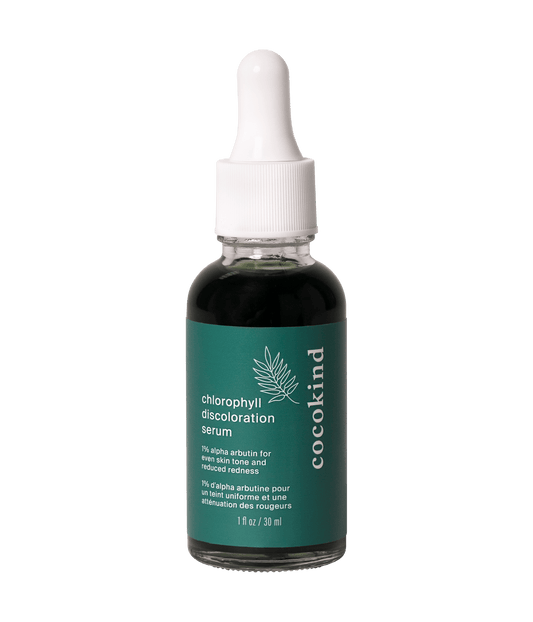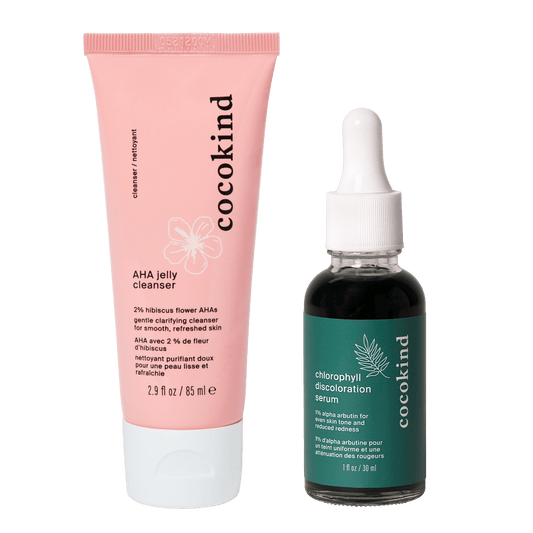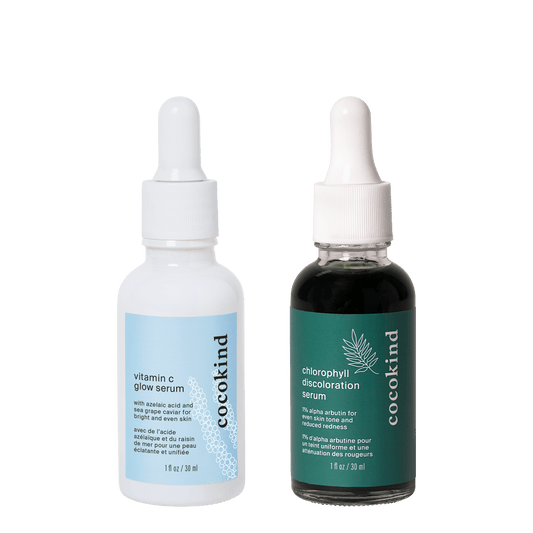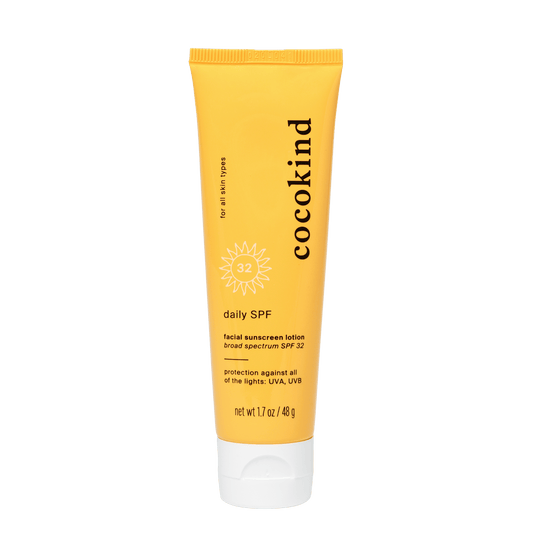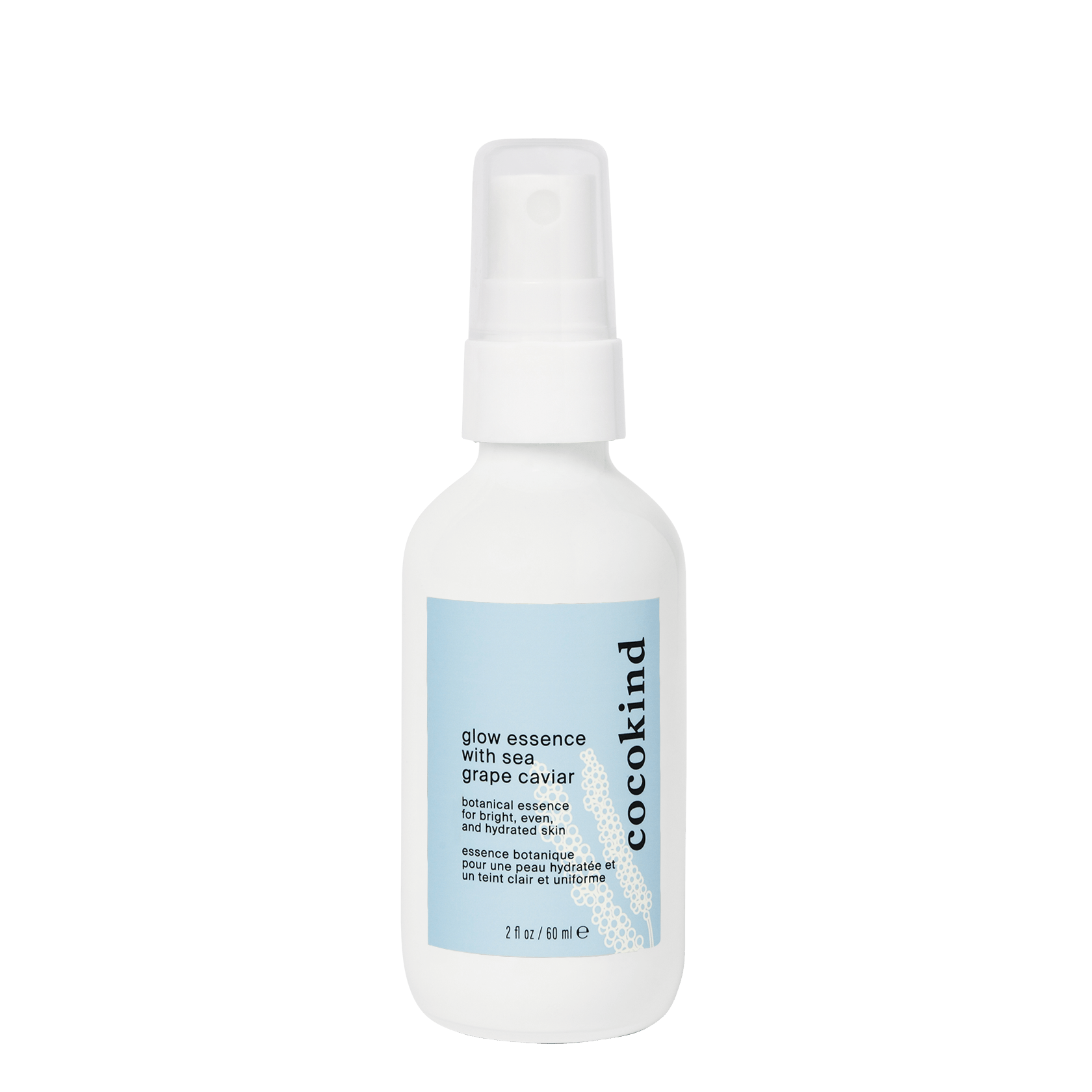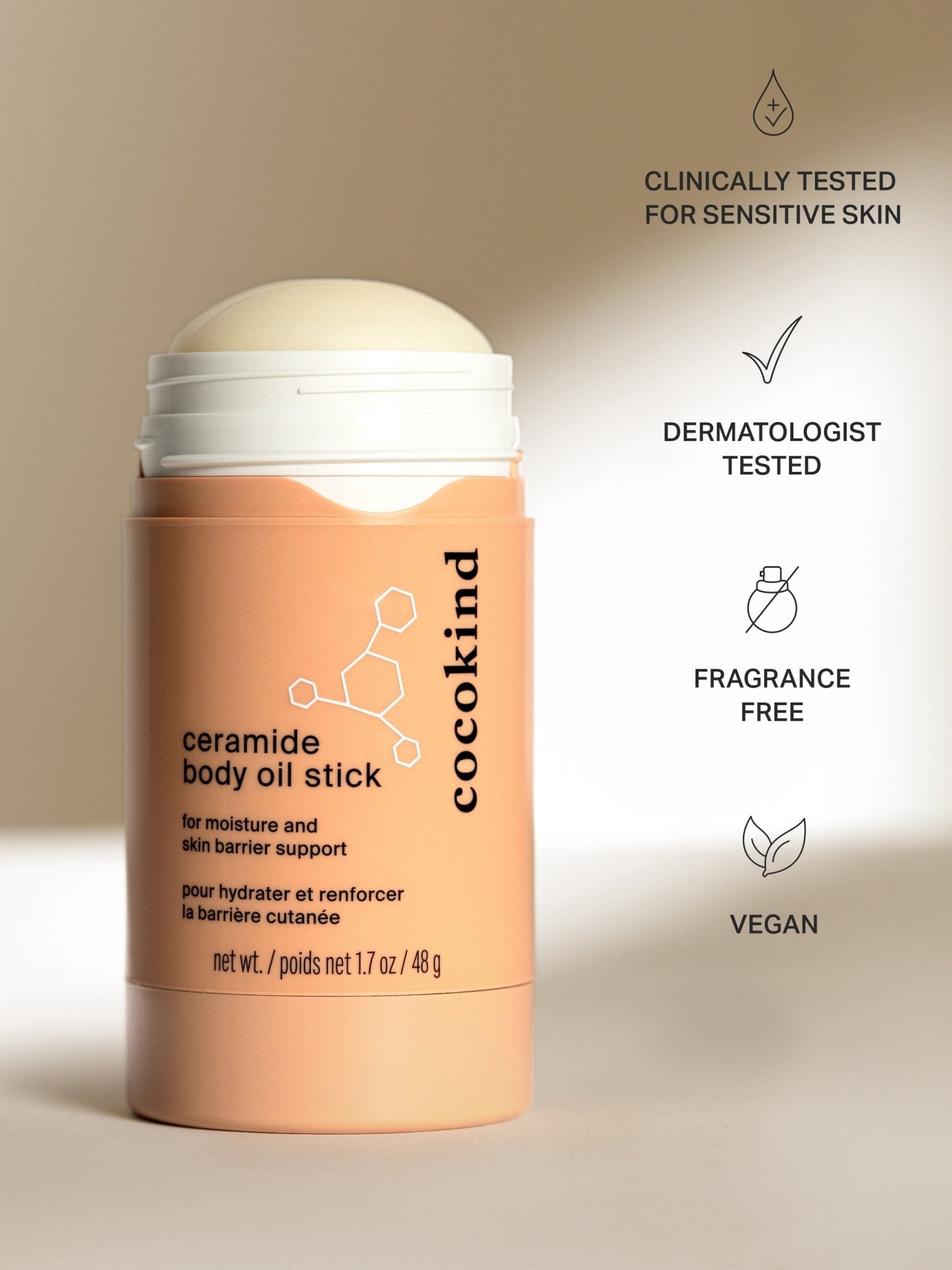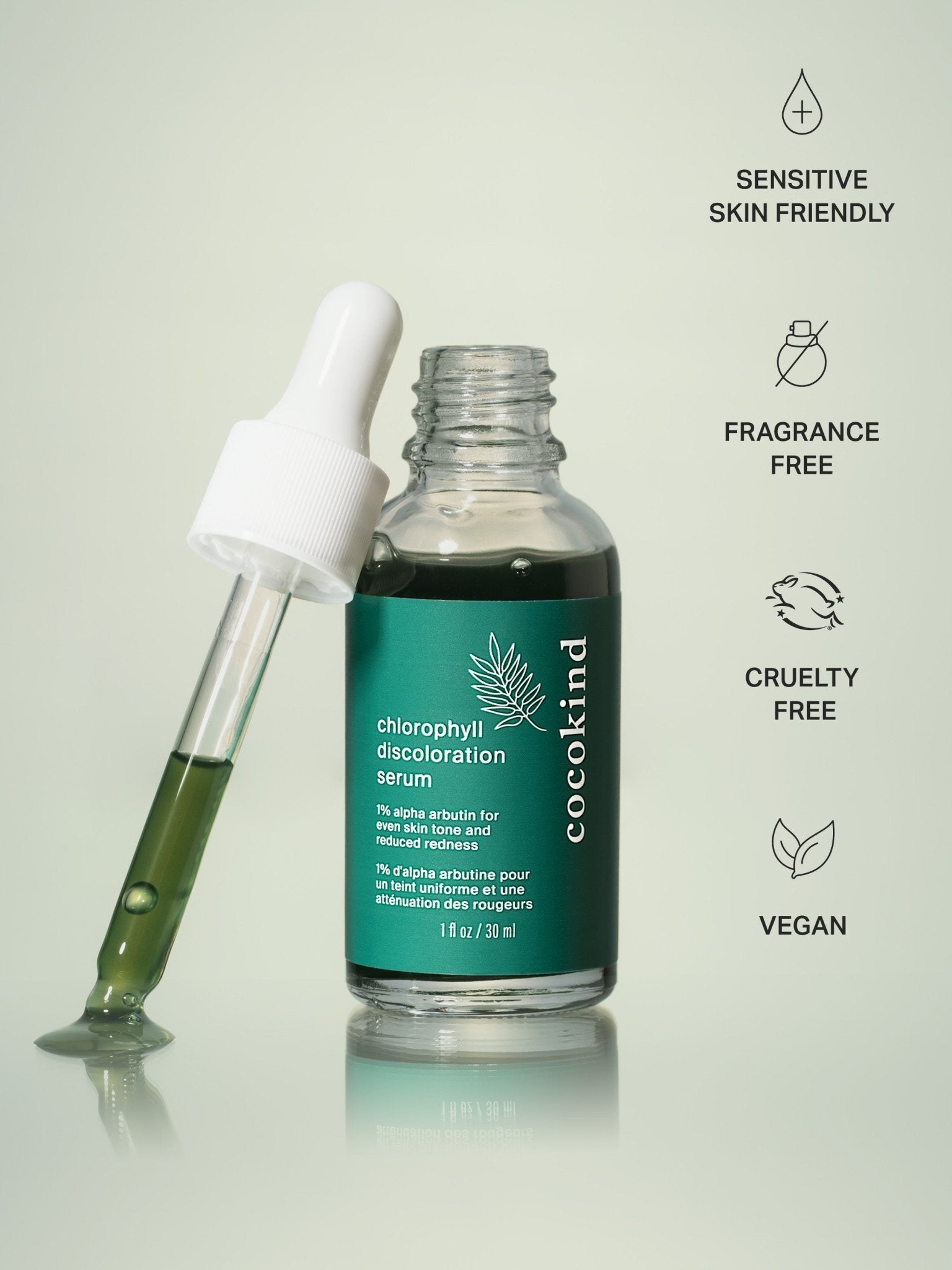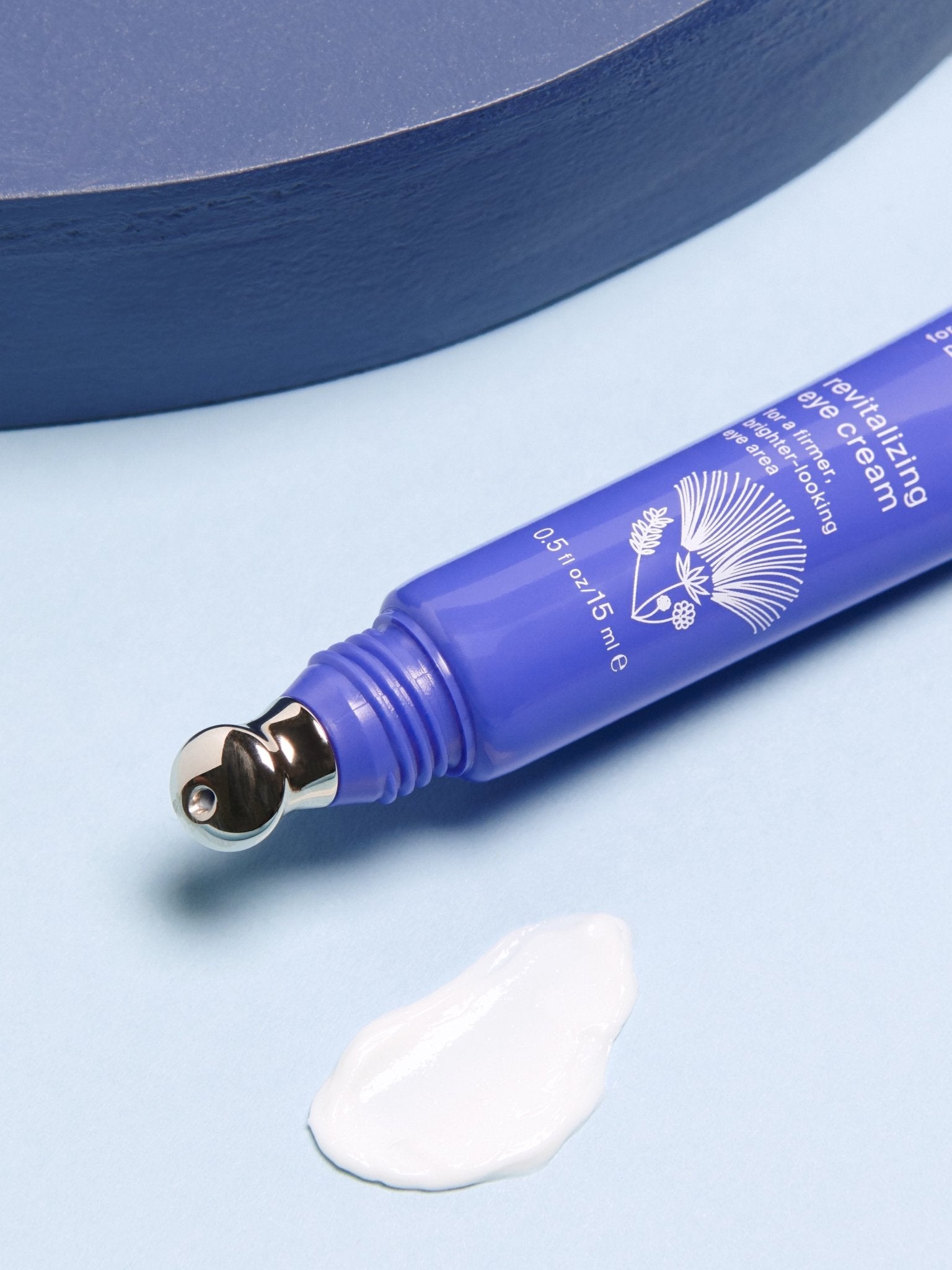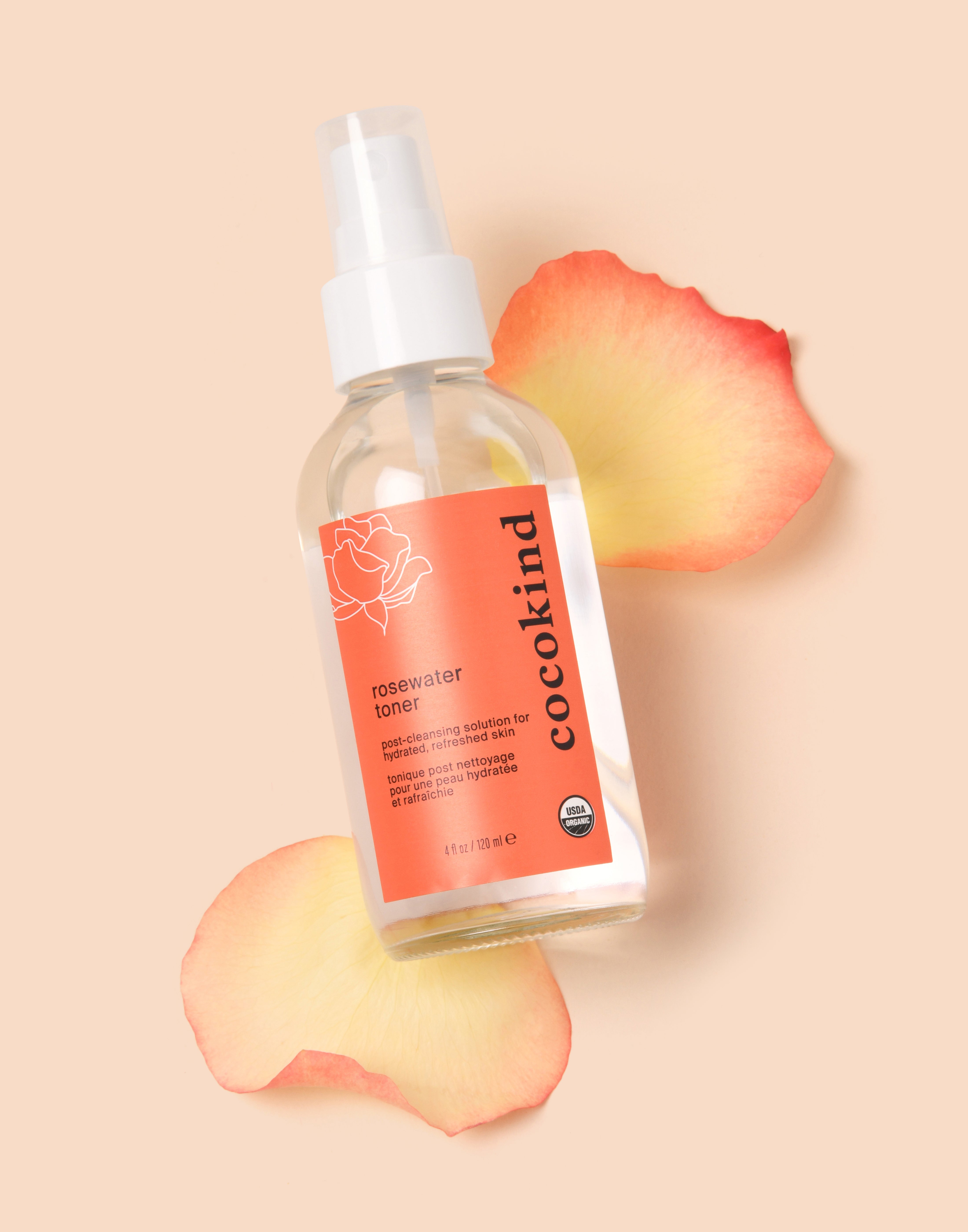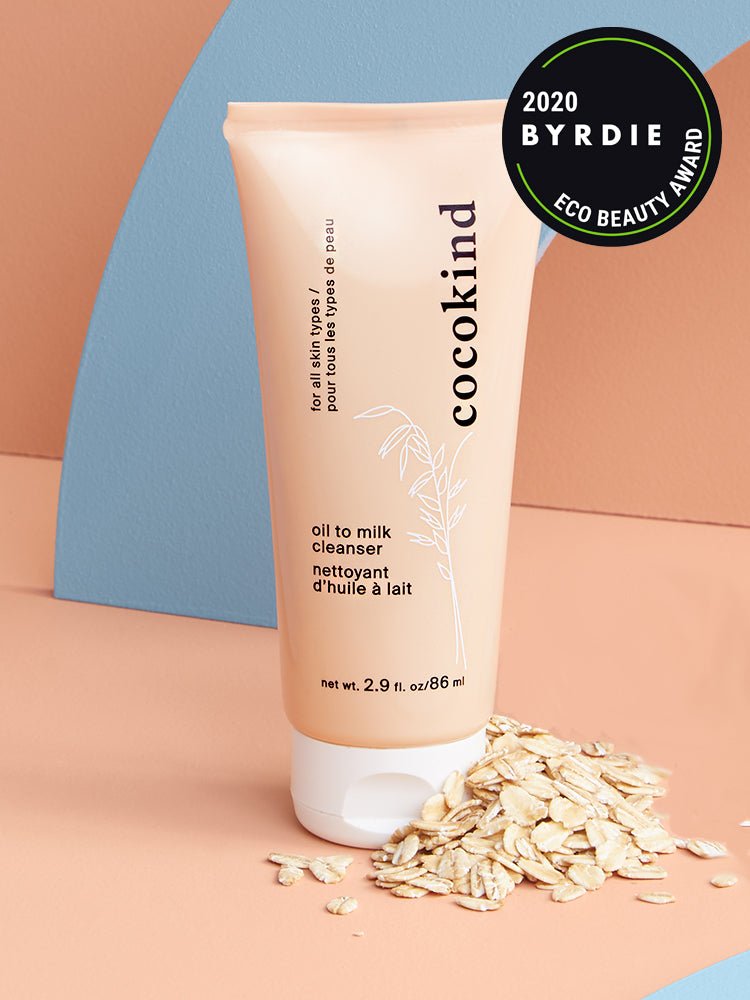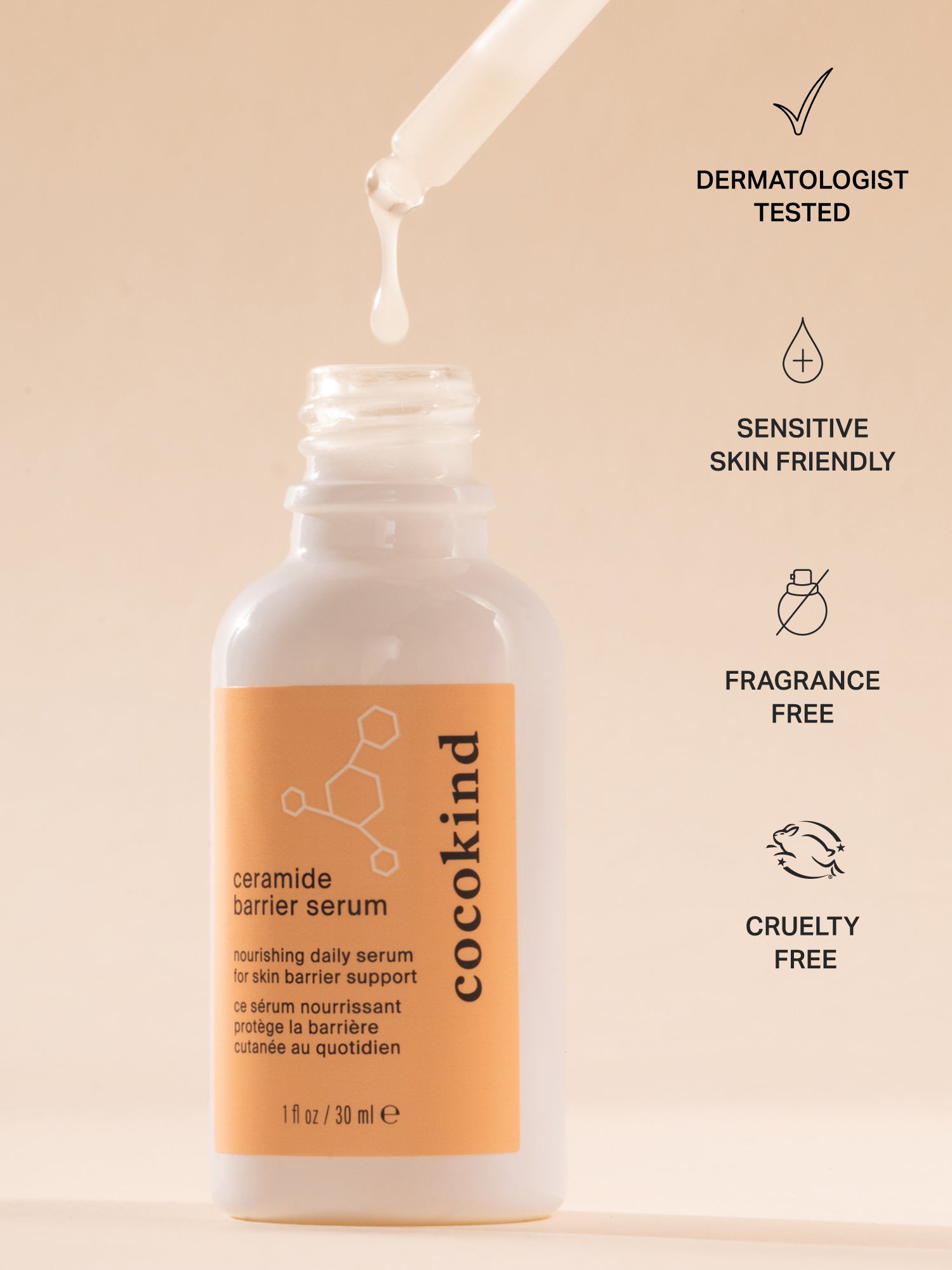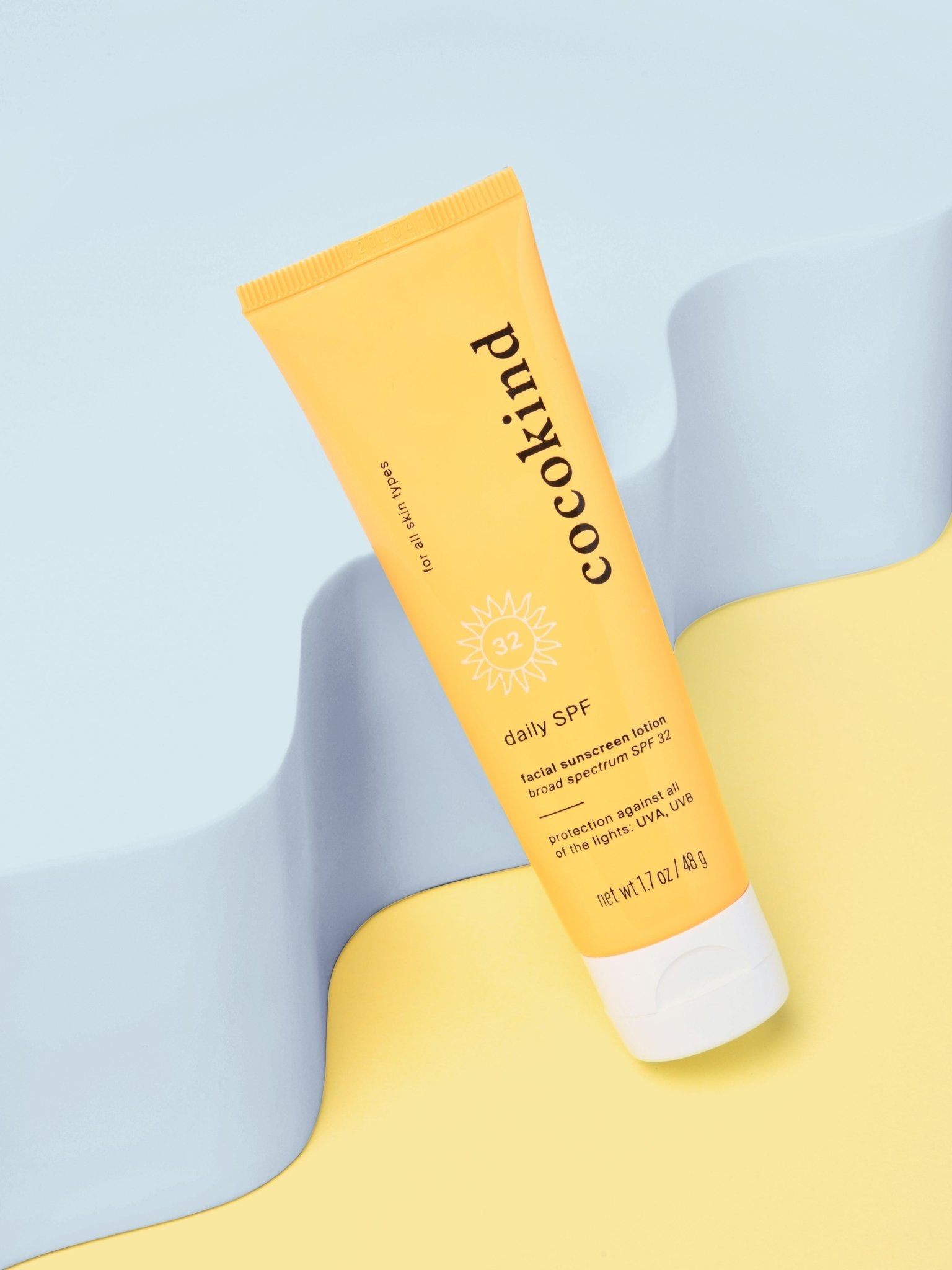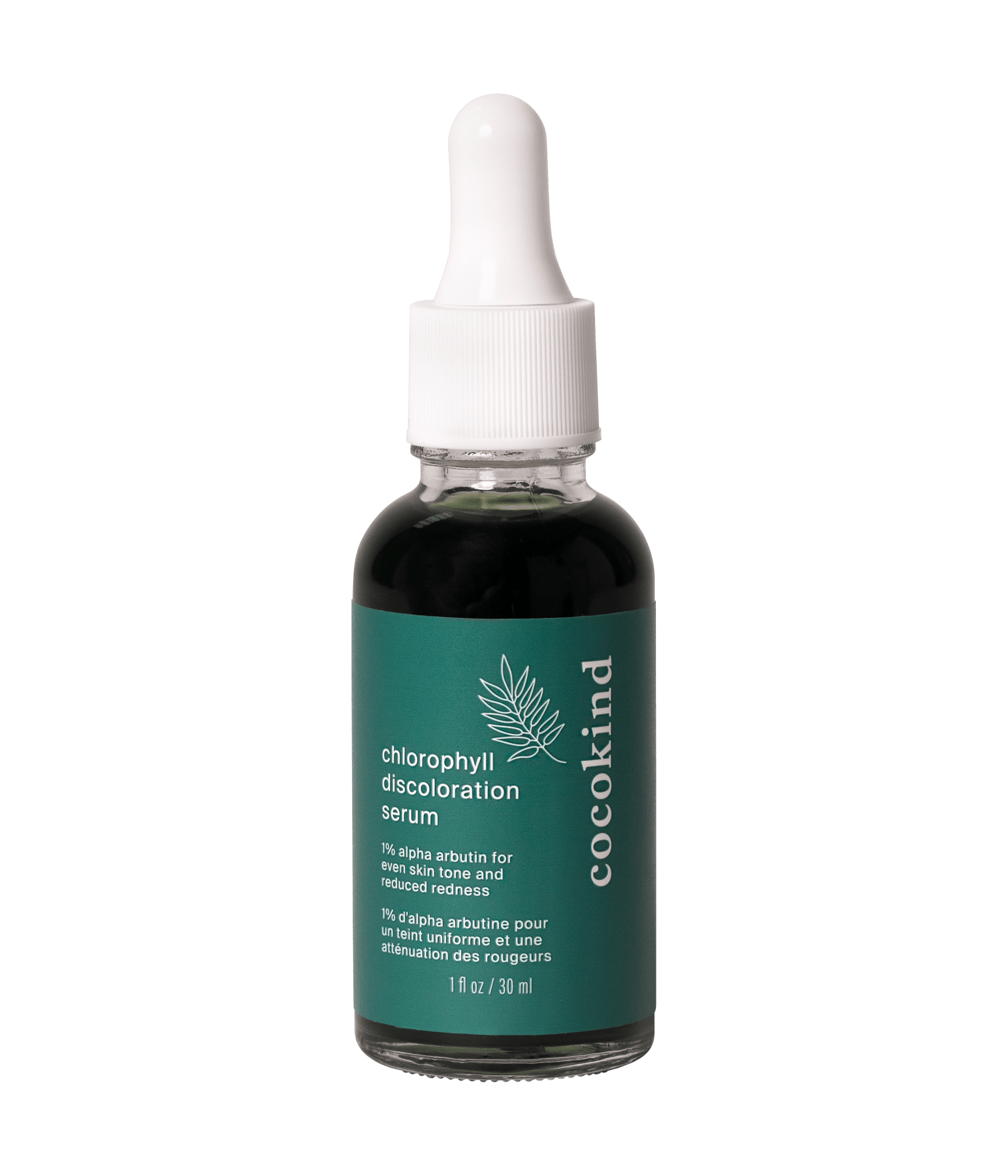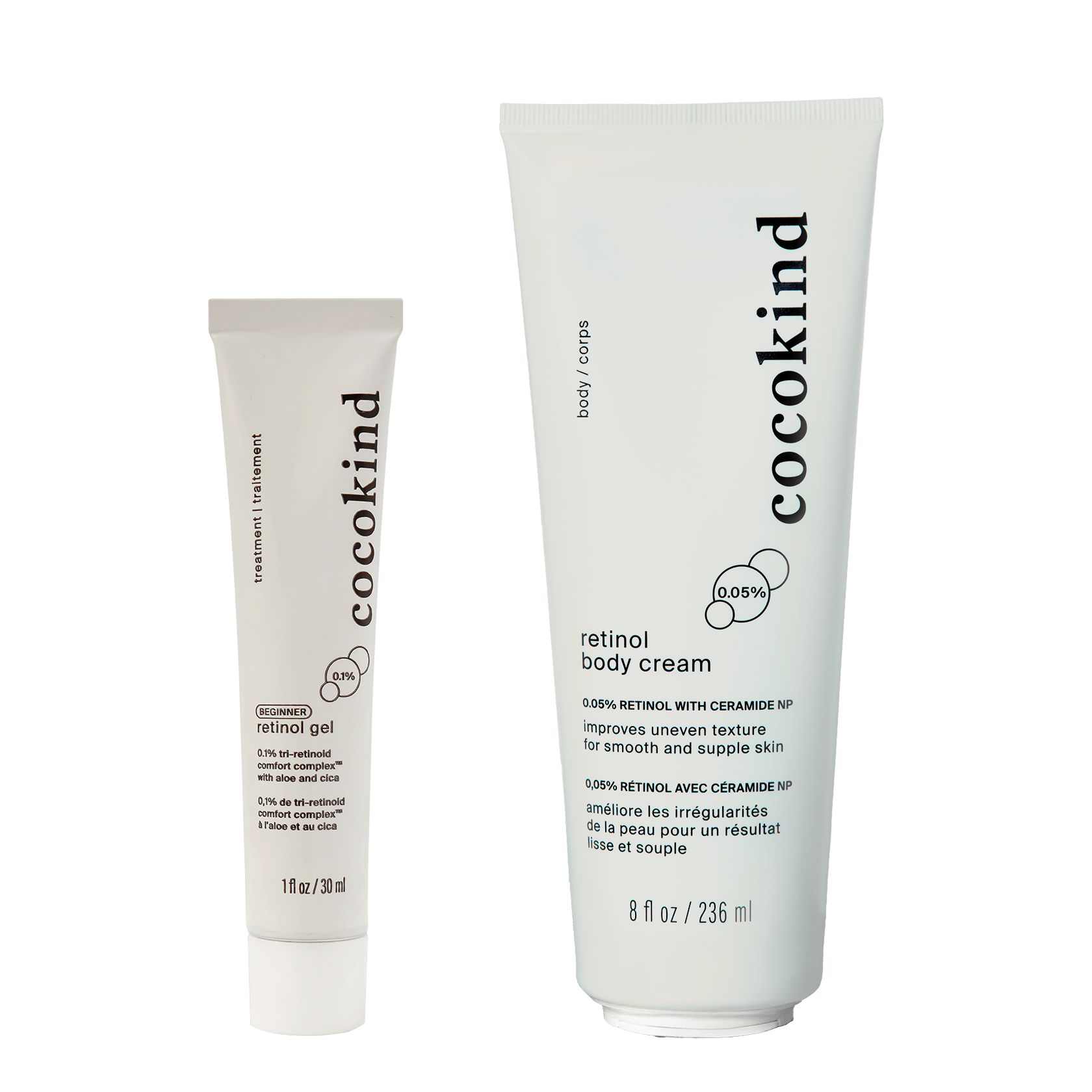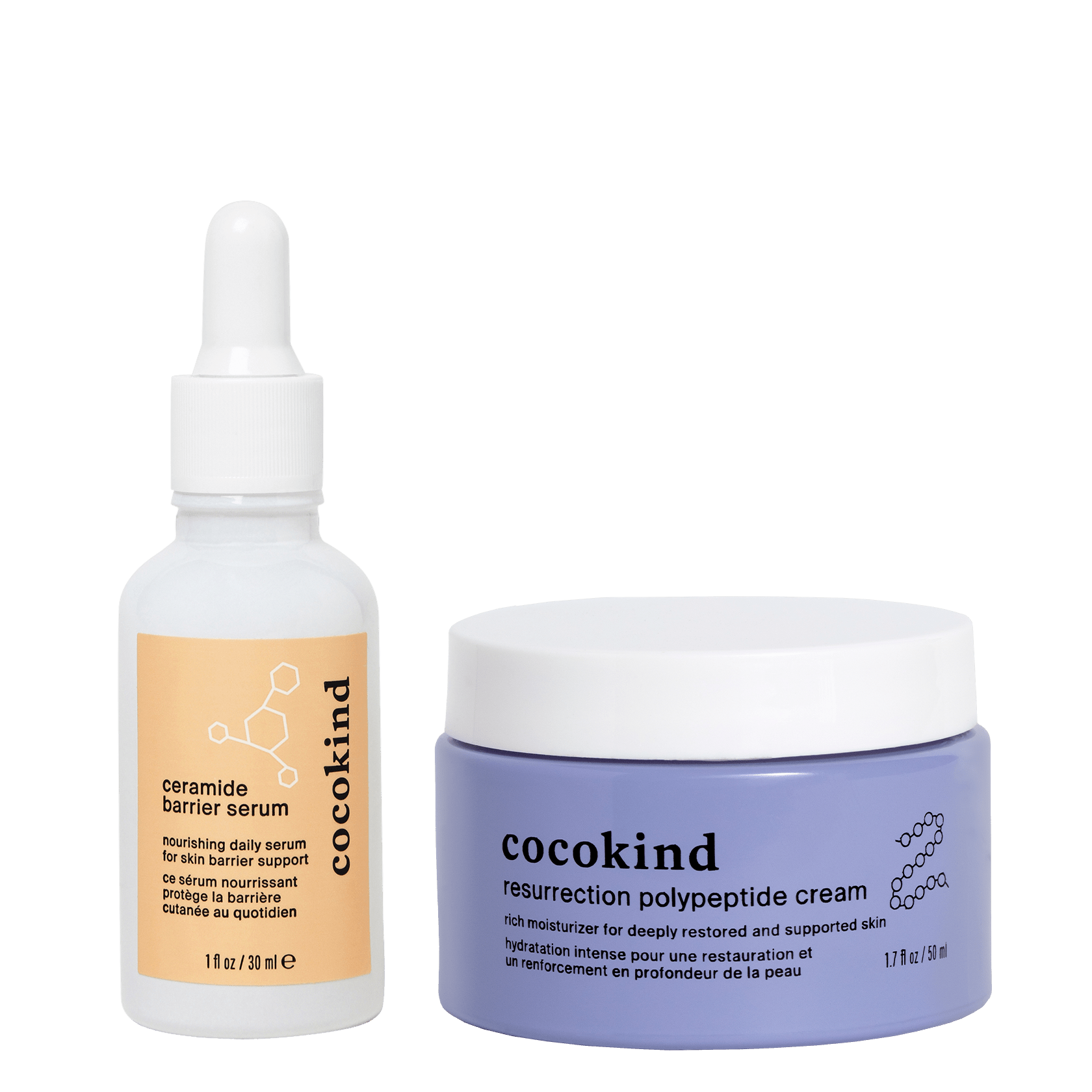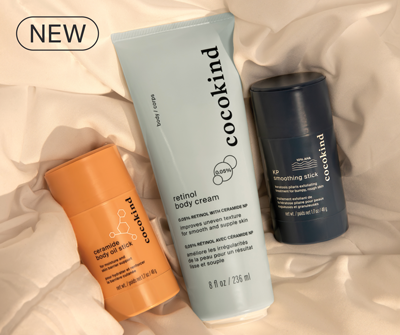If you have hyperpigmentation, sun spots, post-blemish marks, melasma, or redness, you are NOT alone! Discoloration is extremely common across all different skin types and tones and can be caused by a number of factors. We’re breaking down various forms of skin discoloration and how to effectively treat and prevent them below:
4 common types of discoloration, explained
- Age/Sun spots:
- Overexposure to sunlight (UV) speeds up melanin production. Over time, areas with higher-than-typical concentrations of melanin will develop clusters of darker, freckle-looking spots. Most commonly found on the face, chest, and hands. Using an SPF you love every day is a great way to protect your skin from the skin-damaging effects of UV rays.
- Post-blemish marks:
- When a blemish heals, the inflammation often triggers your body to overproduce melanin leaving behind a dark pink, reddish, or brown mark. Most of the time, that mark will fade and become less noticeable overtime. Try not to pick or squeeze at any active or healing spots as this can increase the chances of scarring.
- Redness:
- Redness can manifest in many different ways for a multitude of reasons. Most commonly, a damaged skin barrier and UV overexposure can leave skin looking red and feeling dried out and a bit painful. Using soothing serums and SPF daily can help offset this type of redness. Other forms of redness can be caused by irritation, rash, reaction, or conditions like rosacea and psoriasis.
- Melasma:
- Larger, patchy dark spots on the skin can be triggered by sun exposure and hormones. It’s common to experience melasma during pregnancy when hormonal shifts push melanocytes to overproduce melanin. Again, sun protection is key in reducing and preventing this type of skin discoloration.
a gentle way to fade spots
We formulated chlorophyll discoloration serum with our newest ingredient obsession: alpha-arbutin. It’s a naturally occurring antioxidant and a powerful spot fader that's gentler than many traditional discoloration treatments, which tend to be harsh. We paired 1% alpha arbutin with other hero ingredients like licorice root and panthenol to boost the discoloration-correcting powers of our chlorophyll discoloration serum.
Now we can’t forget the ingredient that gives this serum both its name and green hue. Chlorophyll, a cocokind-beloved ingredient, is an antioxidant-rich plant pigment that offsets redness and boosts radiance. The finish is glowy and doesn’t leave a visible tint behind - pretty perfect for no-makeup days!
if advanced brightening is your goal
Our chlorophyll discoloration serum works wonders on its own, but if your main skin concern is dullness, you can experience advanced brightening benefits by incorporating the right additional steps into your routine. The Discoloration Correcting Duo combines the spot-fading power of our chlorophyll discoloration serum with the brightening benefits of the vitamin C glow serum, resulting in a more even-toned and radiant complexion!
One way to ensure you’re maximizing the benefits of all your skincare steps is to exfoliate gently (and regularly!). The Cleanse & Fade Duo pairs AHA jelly cleanser with chlorophyll discoloration serum to lift away dead, dull skin cells, enhancing spot-fading benefits and allowing the serum to more effectively target discoloration.
let’s talk results
Of course, some dark spots can be stubborn, but our chlorophyll discoloration serum has consistently shown remarkable results within 28 days of consistent use. The best part is that you can feel good about working this serum into your daily routine (AM and/or PM) due to its gentle nature. Plus there is no need to do any complicated skincare math to know if it’s compatible with your existing routine, this serum plays well with any other ingredients including retinol.
While our chlorophyll discoloration serum works to fade discoloration, it's essential to remember that skin is meant to look like skin. Redness, dark spots, post-blemish marks, and melasma are all entirely normal!

